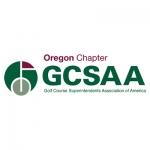December 2014 Rule of the Month - Reflections on Deflections
The vast majority of us will play golf our entire lives without hitting ourselves with our own golf ball. I write this within a few weeks of narrowly avoiding the same when a tree branch violently threw my ball back at me. While many golfers will have an inadvertent double hit during a stroke, it’s rare that a player gets struck by his own ball. And it’s even rarer that a player will be struck with his own ball twice in the same round, much less twice during play of a single hole. The odds of that happening are probably higher than that of a 20 handicapper shooting a net score differential in a tournament 10 points lower than his Handicap Index (the odds on that scenario, in case you are interested, is 37,000 to 1).
But for all of you that have suffered the indignity of being struck by your own ball after a stroke, the story you are about to read is true. And the names have not been changed to incriminate the guilty.
During this year’s stroke-play Club Championship at Creekside Golf Club in Salem, Oregon, my good friend Terry McEvilly -- who is an OGA Senior Rules Official, co-author of the Rule of the Month column and who I teach off-season OGA Rules seminars with -- hit his tee shot on the par-5 twelfth hole into tall grass near a fairway bunker. Thinking that he may be able to get a club on the ball, even though he had to stand in the bunker to play the shot, he selected a hybrid club and made a stroke. The ball popped straight up, struck him on the hand and landed back into the tall grass. Not being one to accept defeat readily, Terry re-attempted the same shot and (you guessed it) the ball again popped straight up, this time striking him on the arm and coming to rest in the bunker after the deflection. He is successful at extricating the ball from the bunker with his next stroke and takes two additional strokes to reach the putting green. He then two putts to complete the hole.
What is the ruling and Terry’s score, for the hole?
A. Terry incurs no penalties as the deflections are a rub of the green as defined. His score for the hole is 8.
B. Terry incurs a one stroke penalty for each deflection for a total of two penalty strokes. His score for the hole is 10
C. Terry incurs a two stroke penalty for each deflection for a total of four penalty strokes. His score for the hole is 12
D. A player is required to cancel a stroke and replay when the ball hits the player. By failing to do so, Terry is disqualified from the competition.
Answer
B. Terry incurs a one stroke penalty for each deflection for a total of two penalty strokes. His score for the hole is 10.
The correct answer is B and Terry’s score of 10 for the hole is calculated as follows; one stroke from the teeing ground (1), two strokes made from the tall grass (3), two separate one-stroke penalties for accidentally deflecting his ball after a stroke (5), one stroke made from the bunker (6), two strokes to reach the putting green (8) and two putts (10).
The situation described above is covered in Rule 19 (Ball in Motion Deflected or Stopped). Specifically, Rule 19-2 applies when the ball is accidentally deflected by the player, his partner, caddie or his equipment. It is one of nineteen situations in the Rules, whether stroke play or match play, when a one stroke penalty applies and Terry was required to play the ball as it lay after each deflection. It is important to note that the keyword here is “accidentally.” If a player purposely deflects his ball, Rule 1-2 governs and increases the penalty to loss of hole in match play or two strokes in stroke play.
Generally, there are three scenarios under the Rules that involve a player’s ball being deflected or stopped by the player and each situation has a different penalty and procedure. As mentioned above, a ball accidentally deflected or stopped by the player carries a one stroke penalty and the ball is played as it lies (Rule 19-2). A ball purposely deflected or stopped by the player is a breach of Rule 1-2 and he would incur a loss of hole in match play or a two stroke penalty in stroke play and the ball is played as it lies. If the breach under 1-2 is considered a serious breach it may lead to a player’s disqualification (a serious breach would be one where the action resulted in the player gaining a significant advantage, such as stopping a ball that was about to roll out of bounds). The third scenario involves a player in the process of dropping a ball. If the ball, when dropped and before it comes to rest, touches any person or the equipment of any player, the ball must be re-dropped without penalty. If the ball is not re-dropped and the player makes a stroke, the player will be in breach of Rule 20-2a for playing from a wrong place.
One of the purposes of this month’s article is to point out that every golfer will, at times, incur penalties without any intention of wrong doing. It is part of the game. And I am sure Terry would be more than happy to tell you about how, during a match against each other, I managed to incur four loss of hole penalties without any intention of wrong doing.
OGA Rules Officials: Pete Scholz and Terry McEvilly
Published / Last Updated On:
12/22/14








